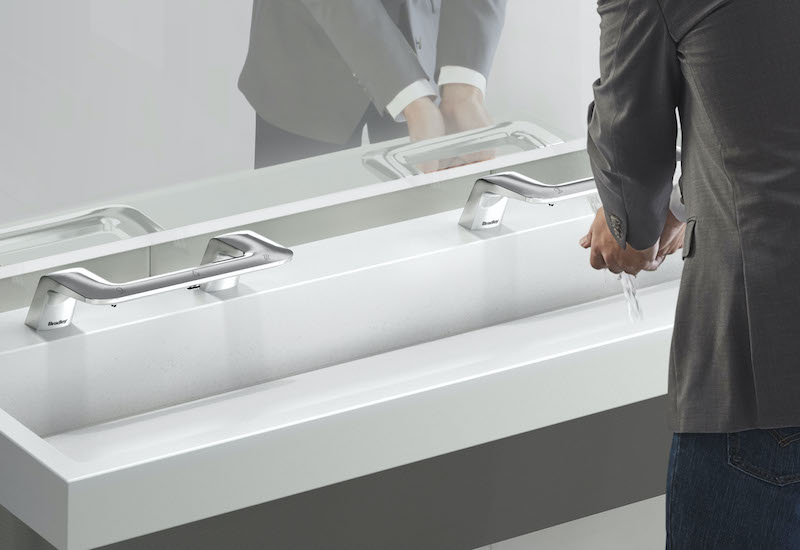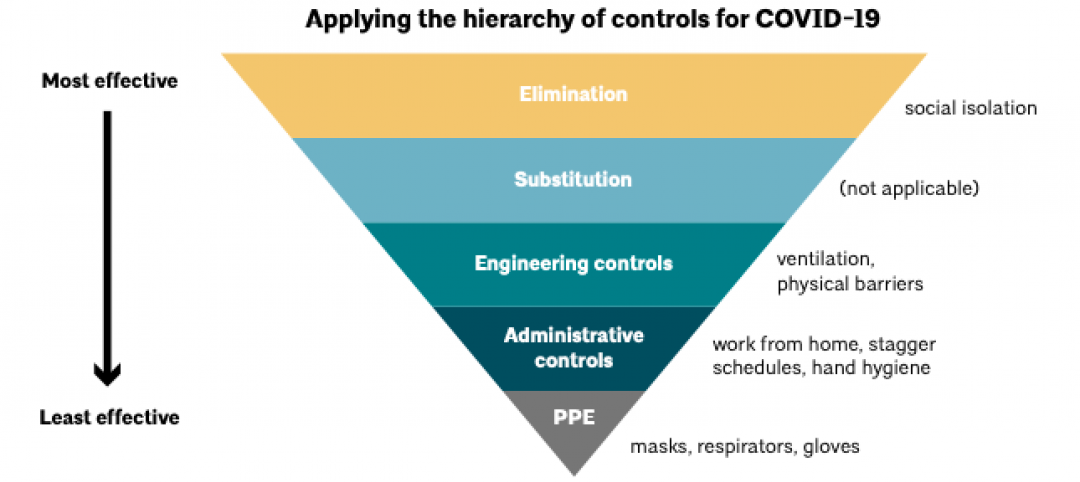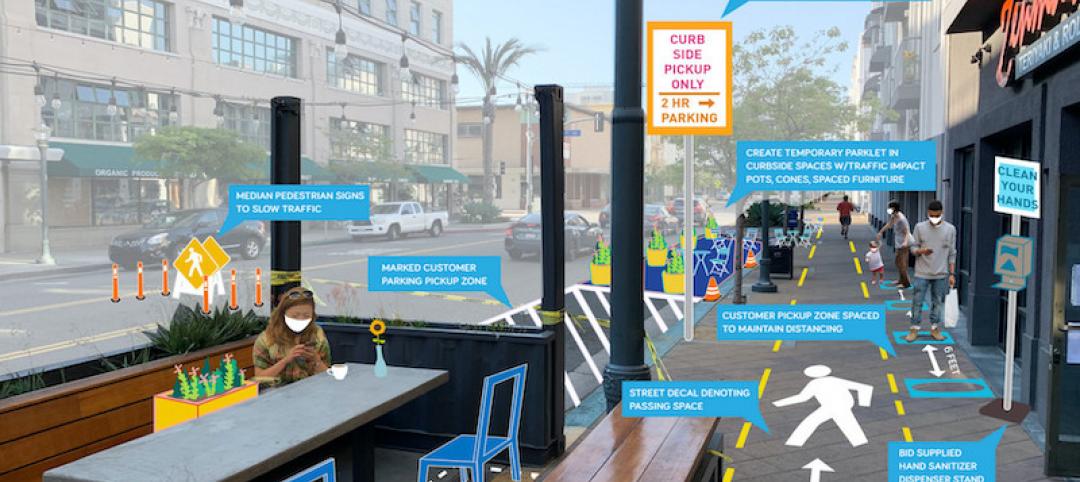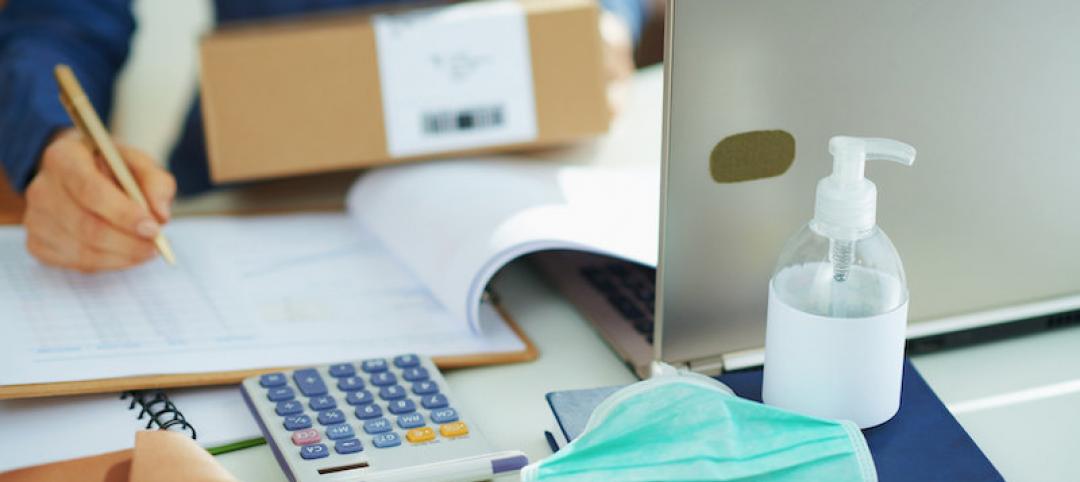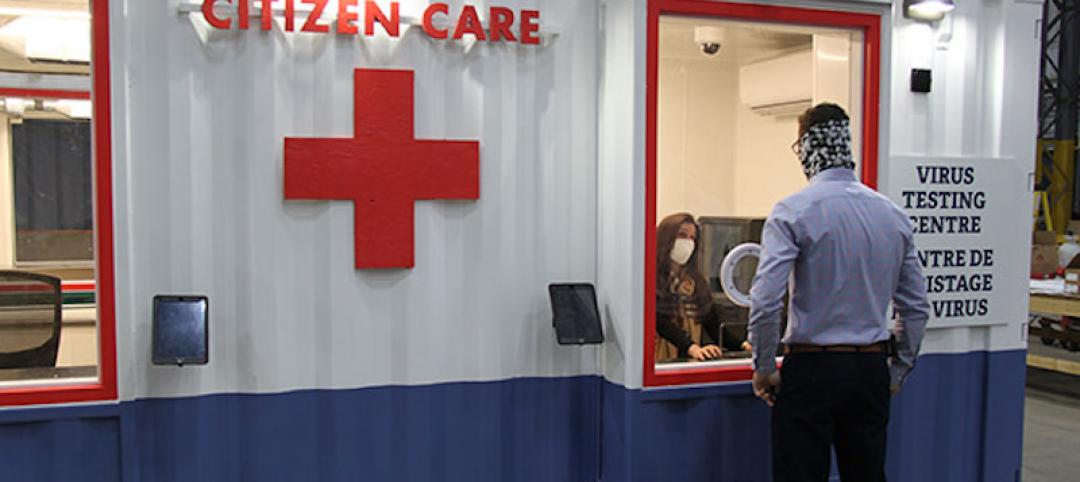Germaphobes rejoice! Public restrooms may soon become a much more sanitary place than they have been in the past thanks to the effects of COVID-19.
As the novel coronavirus spread rapidly around the world, people quickly became aware that perhaps the obsessive hand-washing, any-bathroom-is-touchless-if-you-try-hard-enough germaphobes among us may have had the right idea. And now, it is time for public restroom design to catch up to the current state of affairs.
“As businesses and public establishments reopen and Americans return to using facilities, all eyes are on public restrooms,” says Jon Dommisse, Director of Strategy and Corporate Development, Bradley Corp. “Today’s commercial washroom will be of paramount importance in providing hand washing systems and supplies, and mitigating sickness-causing germs.”
Below are commercial restroom upgrades, as outlined by Bradley Corp., to help improve hand washing and minimize germs.
1. Post signage. Reinforce cleanliness with friendly reminders about washing hands for 20 seconds per Centers for Disease Control (CDC) guidelines, maintaining safe distances between users, throwing away paper towels, etc. The Healthy Hand Washing Survey by Bradley Corp. shows that 40% of Americans increase hand washing when signs are posted.
2. Offer touchless fixtures. Cross contamination of germs in restrooms can be reduced by using touch-free fixtures for everything from soap, faucets, hand dryers/towels, doors and flushers. Public health experts agree: “Under any circumstance, using touchless fixtures helps to inhibit the spread of germs in restrooms and buildings,” says medical microbiologist Michael P. McCann, Ph.D., Professor of Biology, Saint Joseph's University. “The more we avoid restroom touchpoints, the healthier and easier our operations will be. Hands-free washrooms are a win-win for consumers and businesses.”
Research shows that consumers are highly in favor of using touch-free fixtures. “91% of Americans believe it’s extremely or somewhat important that public restrooms are equipped with touchless fixtures,” Dommisse said. “In fact, making everything touchless is Americans’ most requested improvement in restrooms.”
3. Increase cleaning, sanitization and restocking. Proper and frequent cleaning and disinfection is key for restrooms, especially for high-touch surfaces, such as doorknobs, faucets, sinks, toilets, stall door openers and paper towel dispensers. According to the CDC, daily cleaning with soap and water reduces germs, dirt, and impurities on the surface, and should be done frequently, especially if there is high traffic.
“It’s also important to disinfect surfaces to kill germs at least once daily, and more often if the restroom is busy,” Dr. McCann said. Finally, be sure to check and restock supplies regularly. Experiencing unclean low-stocked restrooms are pet peeves for restroom users.
4. Provide trash cans and hand sanitizer near exits. “Our research shows that 65% of Americans use paper toweling to avoid contact with restroom doors and faucets,” Dommisse said. “Keeping paper towels and waste containers near doorways can be helpful so people can throw them away upon exiting.”
Installing hand sanitizers outside restrooms is another way people can sanitize their hands upon entering and leaving the restroom.
5. Prop open doors to increase visibility and minimize contact. To limit the number of people in restrooms and encourage social distancing, a propped open door can give people a small window into seeing how many others are already inside. In addition, a slightly opened door allows people to maneuver the door with their elbow, as opposed to their hands.
Related Stories
Coronavirus | May 7, 2020
Architects release new resource for safer re-occupancy of buildings
The American Institute of Architects (AIA) is releasing a new Re-occupancy Assessment Tool today that provides strategies for limiting exposure to COVID-19 in buildings.
Coronavirus | May 6, 2020
Reopening Main Street post-COVID-19 quarantine
Cities and communities will need to adjust public space to allow customers back in with distancing in mind.
Coronavirus | May 6, 2020
Making jobsites safer in the COVID-19 world
A leading construction manager and installer certification alliance share their insights.
Coronavirus | May 6, 2020
National Construction Association and Procore to release new data showing the impacts of the coronavirus on the constructionindustry
Data will be released on Friday, may 8 at 12 pm EDT.
Healthcare Facilities | May 5, 2020
Holt Construction, U.S. Army Corps of Engineers complete temporary hospital in two weeks
The project is located in Paramus, N.J.
Coronavirus | May 5, 2020
How will COVID-19 change the procurement of professional design services?
We can use this moment as a test-case to build greater flexibility into how we pursue, win and deliver capital projects, better preparing the industry to meet the next disruption.
Coronavirus | May 4, 2020
Design steps for reopening embattled hotels
TPG Architecture recommends post-coronavirus changes in three stages.
Coronavirus | Apr 30, 2020
Gilbane shares supply-chain status of products affected by coronavirus
Imported products seem more susceptible to delays
Coronavirus | Apr 26, 2020
PCL Construction rolls out portable coronavirus testing centers
The prefabricated boxes offer walk-up and drive-thru options.
Coronavirus | Apr 23, 2020
It's time to make your back-to-the-office plan
Here are some practical, tactical considerations for reuniting.


